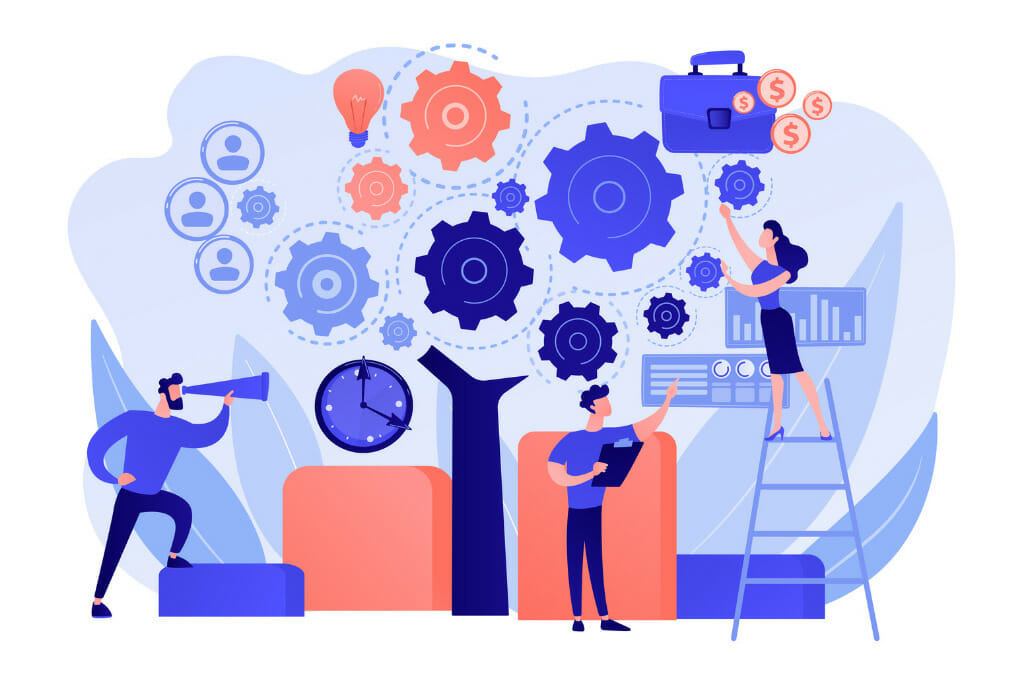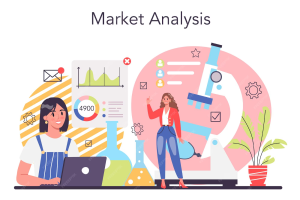5 Reasons of Software Modernization: Unlock Business Growth While Balancing Cost, Risk, and Innovation

Introduction: Why Software Modernization Defines Competitive Survival in 2025
Software Modernization has become a strategic business necessity in the digital economy of 2025. Enterprises no longer compete on products or services alone — they compete on digital agility, operational resilience, and exceptional customer experiences. Yet, many organizations still rely on legacy systems that were once cutting-edge but now act as shackles of technical debt, inefficiency, and risk..
Modernizing these systems is no longer about upgrading technology — it’s about future-proofing the enterprise. The question for today’s C-suite is not “Can we afford modernization?” but rather, “Can we afford not to modernize?”
This article explores how modernization drives measurable ROI, mitigates operational risks, and fuels continuous innovation — offering a comprehensive business case tailored for decision-makers, not just developers.
Understanding Software Modernization: A Strategic, Not Just Technical, Imperative
Software modernization refers to transforming legacy systems into agile, scalable, and cloud-native architectures that support business goals. This may involve refactoring code, migrating infrastructure, or re-engineering entire platforms to align with modern development practices like microservices, DevOps, and AI integration.
However, modernization is not only about technology replacement. It’s about aligning the IT backbone with strategic objectives such as:
- Reducing operational inefficiencies
- Accelerating time-to-market
- Enhancing customer experience
- Driving innovation and revenue growth
Organizations that fail to modernize face invisible costs: slower innovation cycles, higher maintenance spending, limited scalability, and security vulnerabilities — all of which translate into competitive disadvantage.
The ROI of Software Modernization: Turning Cost into Strategic Capital
Modernization often triggers concerns around budget allocation and short-term disruption. Yet when measured through the right KPIs, it delivers significant long-term returns.
a. Reduced Downtime and Maintenance Costs
Legacy systems are prone to outages, compatibility issues, and manual maintenance. Each hour of downtime costs enterprises $300,000 to $500,000 (Gartner, 2024).
By adopting cloud-native architectures and automated monitoring, businesses achieve:
- 99.99% uptime through redundancy and load balancing
- 40–60% reduction in maintenance overheads
- Predictive issue resolution using AI-driven monitoring
Faster Time-to-Market
Modernized software leverages DevOps pipelines, containerization, and continuous integration (CI/CD) to reduce deployment cycles from weeks to hours.
This speed translates into faster revenue realization and market adaptability — especially vital for industries where digital products evolve weekly.
c. Enhanced User Experience
Modern interfaces, responsive design, and performance optimization deliver measurable user satisfaction.
According to Google’s Core Web Vitals benchmarks, modernized applications see:
- +35% increase in user retention
- +25% boost in conversion rates
- +40% improvement in session duration
d. Scalability and Future Innovation
Cloud-native systems scale dynamically with demand, preventing over-provisioning.
Furthermore, a modern architecture allows for rapid AI integration, API expansion, and data-driven decision-making, unlocking new business models and revenue channels.
In essence: Modernization is not a cost — it’s an investment in long-term agility.
Risk Mitigation Through Modernization
Modernization inherently reduces operational, cybersecurity, and compliance risks that legacy systems struggle to manage.
a. Security and Compliance
Outdated software often lacks current encryption, authentication, and audit features. By modernizing:
- Enterprises can implement Zero Trust Architecture and end-to-end encryption
- Compliance with evolving standards like GDPR, HIPAA, and ISO 27001 becomes automated
- Vulnerabilities are patched continuously rather than reactively
b. Business Continuity and Disaster Recovery
Modern systems support multi-region failover, real-time replication, and disaster recovery automation.
This ensures continuity even in the face of infrastructure failures, natural disasters, or cyberattacks.
c. Technical Debt Reduction
Technical debt — the accumulated inefficiencies of outdated code — increases maintenance costs by up to 25% annually.
Through refactoring and automation, modernization clears that debt, restoring IT efficiency and developer productivity.
C-Suite Perspective: Strategic Alignment and Key KPIs
Executives evaluating modernization initiatives need clear metrics and governance frameworks to measure impact across financial, operational, and innovation dimensions.
Key Business KPIs for Measuring Modernization ROI
| Category | Key KPI | Expected Outcome |
| Financial | IT maintenance cost reduction | 40–60% decrease |
| Operational | Deployment frequency | 5× faster release cycles |
| Customer Experience | Net Promoter Score (NPS) | +20–30% improvement |
| Innovation | Time-to-market for new features | 50% acceleration |
| Risk | System downtime | <0.01% annually |
| Efficiency | Developer productivity | +35% increase |
CIOs and CTOs should present modernization not as a one-time expense but as a strategic transformation roadmap — directly tied to business KPIs and digital competitiveness.
Balancing Cost, Risk, and Innovation: The Executive Dilemma

C-suite leaders must navigate the delicate triangle of modernization priorities:
a. Cost Control
Immediate modernization may appear expensive, but delaying it amplifies hidden costs — from lost market share to increased risk exposure.
The key is to phase modernization strategically: prioritize high-impact systems, automate migrations, and leverage cloud credits or vendor partnerships to offset expenses.
b. Risk Management
Mitigation is embedded in every modernization layer — from redundancy and version control to continuous compliance.
Executives must adopt a risk-based modernization strategy: evaluate system criticality, data sensitivity, and customer impact to define timelines.
c. Innovation Enablement
Modernization unlocks innovation agility. Once infrastructure and codebases are re-engineered, teams can deploy new AI models, expand APIs, and experiment without disrupting legacy systems.
This balance transforms modernization into a core pillar of enterprise innovation strategy, not just a cost-reduction initiative.
6. The Modernization Roadmap: From Vision to Execution
A successful modernization journey involves structured phases.
Step 1: Assessment and Discovery
Audit existing applications — their dependencies, performance, and technical debt.
Use tools like Google Cloud Migrate, AWS Migration Hub, or Azure Advisor for automated analysis.
Step 2: Strategic Prioritization
Identify which systems to modernize, rebuild, or retire.
Prioritize based on business value, risk level, and integration complexity.
Step 3: Migration and Refactoring
Migrate workloads to cloud environments, refactor legacy code into microservices, and integrate modern databases (e.g., NoSQL, BigQuery).
Step 4: Automation and Optimization
Implement CI/CD pipelines, monitoring tools (e.g., Prometheus, Datadog), and observability dashboards for continuous improvement.
Step 5: Continuous Modernization
Treat modernization as an ongoing process — continuously adopting new tools, frameworks, and AI capabilities as technology evolves.
Case Studies: Modernization in Action
Example 1: Capital One — Cloud-First Transformation
Capital One transitioned its legacy data centers to AWS, achieving 40% lower operating costs, 99.99% uptime, and real-time analytics capabilities — transforming into a data-driven financial powerhouse.
Example 2: Adobe — SaaS Modernization
By re-architecting its Creative Suite into Adobe Creative Cloud, Adobe moved from one-time sales to recurring revenue — a modernization that redefined its business model and boosted valuations by 400%.
Example 3: Government Digital Service (UK)
The UK’s modernization initiative consolidated legacy systems across departments, improving transparency, citizen engagement, and service delivery efficiency by over 50%.
Future Outlook: Modernization in the AI Era

AI will further accelerate modernization by:
- Automating code review and refactoring
- Predicting system failures through AI observability
- Enabling autonomous patching and deployment
By 2030, modernization will evolve into self-healing ecosystems — where infrastructure continuously optimizes itself based on predictive models.
The enterprises that adopt this mindset today will dominate tomorrow’s economy.
Conclusion: Modernization as a Catalyst for Continuous Growth
Software modernization is no longer a back-office IT upgrade — it’s a strategic growth enabler that defines the speed, agility, and resilience of modern enterprises.
When executed with a clear ROI framework, risk governance, and innovation mindset, modernization transforms cost centers into innovation engines.
It unlocks faster decision-making, higher scalability, and enhanced customer experience — the core trifecta of digital competitiveness.
In 2025 and beyond, businesses that embrace modernization not as a project but as a continuous journey of evolution will lead the market — while those anchored in legacy systems will fade into irrelevance.
Summary (Executive Takeaway)
- Objective: Modernization drives innovation, agility, and business resilience.
- ROI: Reduced downtime, faster deployments, and improved customer satisfaction.
- Risks Mitigated: Cybersecurity, compliance, and operational failures.
- KPIs to Track: Cost reduction, uptime, productivity, and NPS growth.
- Outcome: A future-ready enterprise built on scalable, intelligent, and secure digital foundations.



